Because of my interest in astronomy, I follow websites related to astronomical discoveries, and like most astrophotographers, I had planned for these days since the first days of their discovery.
I remembered the inflammatory days of ison comet approaching its perihelion in 2013, when it suddenly disappeared near the Sun, and several years later, Comet Swan and Comet Atlas also disappeared in their perihelion.
But in 2020, with the appearance of Neowise, the glory of Comet Hale–Bopp returned to the sky of the amateur astronomy world, and it made me spend many nights photographing Neowise and prepare one of the most complete archives of this beautiful object.
The emergence of bright comets is of great importance in the world of amateur astronomy, despite the busyness and unfavorable weather conditions these days of our beloved homeland of Iran has been caught in different types of carelessness and imprudence unprecedented in its ancient life
alone and sometimes with a group. I asked my friends to photograph these elusive objects of star systems
The date of shooting and the tools used in the photos are indicated, for more and specialized information, visit my website
Sending you kind regards, wishing for a bright tomorrow in dear Iran
Tsuchinshan-ATLAS was detected on January 9, 2023 by the ATLAS telescopes in South Africa. After the initial discovery, astronomers at the Purple Mountain Observatory in Tsuchinshan, China, independently discovered the comet based on images taken in January 2023.
Due to the participation of the ATLAS project and Tsuchinshan observatory in its discovery, this comet is known as “Tsuchinshan-Atlas”.
Finally, the official name given to this comet by the International Astronomical Union (IAU) is C/2023 A3:
The letter C stands for non-periodic comet (a comet that is likely to pass through the solar system only once).
2023 is the year of comet discovery.
The letter A indicates that the comet was discovered in the first half of January.
The number 3 means that this is the third comet discovered in the first half of January.
At the time of discovery, it was approximately 7.3 AU from the Sun. This comet shone at magnitude 18 and was moving at a remarkable speed of 290,664 km/h.
Examination of the orbit of this comet shows that Tsuchinshan Atlas is in a long and elongated orbit of 80 thousand years around the sun.
This comet passed perigee on September 27, 2024 at a distance of 0.39 AU (58 million km). It was then that it became visible to the naked eye.
After passing the Sun on October 9, it reached its peak magnitude of -4.9 per observation reported in the Comet Observation Database (COBS).
And the closest distance to Earth was reached on October 12, 2024 at a distance of 0.47 AU, not approaching the giant planets of the Solar System.
Comet Tsuchinshan Atlas is one of the few rare comets that can be seen with the naked eye. For this reason, it has attracted a lot of attention.
You can see the position of comets online through this link.
The best time to see Comet C/2023 A3 in the night sky was October 10, 2024 , as it moves toward the evening sky. At this time, it was visible on the western horizon after sunset.
No matter what instrument you observe the comet with, you’re likely to see a significant dusty tail. This tail is formed due to the melting of ices and the release of dust from the comet’s nucleus when it approaches the sun.
Type : Comet
Optic : Different optics
Focal Length :
Mount : Tripod & Sky-Watcher AZ-EQ6 & Star Adventurer
Camera : Canon EOS 60Da & R6
ISO : 800-12800
Filters : –
Guide Scope : –
Total EXP : Different
Technique used : –
Dark : –
Flat : –
Bias : –
Dark Flat : –
Software : DeepSky Stacker , PixInsight , Photoshop
Date Taken : September , October , November 2024
Place : Akbar Abad Village , Chelpo Village , Rivash, Neyshabure , Iran
دنباله دار سوچسنشان اطلس
به دلیل علاقه ام به نجوم ، وب سایت هایی که مربوط به کشفیات نجوم هست را دنبال می کنم و مثل بیشترعکاسان نجوم از همان روزهای نخست کشف سوچینشان برای این روزها برنامه ریزی کرده بودم
یاد روزهای پر التهاب نزدیک شدن آیسان به حضیض مداری اش در سال ۲۰۱۳ افتادم که متاسقانه درحضیض خورشیدی اش از بین رفت، چندین سال بعد دنباله دار سوان و دنباله داراطلس هم در حضیض مداری شان از بین رفتند
اما در سال ۲۰۲۰ با ظهورنئووایز شکوه هیل باپ به آسمان دنیای نجوم آماتوری بازگشت وباعث شد شب های زیادی رو به تصویر برداری از نئووایز سپری کنم و یکی از کامل ترین آرشیو ها از این جرم زیبا را تهیه کنم
ظهور دنباله دارهای پرنور در دنیای نجوم آماتوری از اهمیت زیادی برخوردار است با وجود مشغله فراوان و شرایط جوی نامناسب این روزهای وطن عزیزمان ایران که گرفتار انواع متفاوتی از بی توجهی و بی تدبیری بی سابقه در حیات کهن خویش شده به تنهایی و گاها به همراه جمعی از دوستان به تصویربرداری از این اجرام گریزپای منظومه های ستاره ای پرداختم
تاریخ تصویربرداری و ابزار مورد استفاده در عکس ها مشخص شده است ، برای اطلاعات بیشتر و تخصصی به وب سایتم مراجعه کنید
تقدیم نگاه پرمهرتان با آرزوی فردایی روشن درایران عزیز
سوچینشان-اطلس در ۹ دی ۱۴۰۱ توسط تلسکوپهای اطلس در آفریقای جنوبی شناسایی شد. پس از کشف اولیه، ستارهشناسان در رصدخانه پرپل مانتین واقع در سوچینشان چین بهطور مستقل، این دنبالهدار را براساس تصاویری که در دی گرفته شده بود، کشف کردند
بهدلیل مشارکت پروژه اطلس و رصدخانه سوچینشان در کشف آن، این دنباله داربا نام سوچینشان اطلس شناخته میشود
نامی رسمی است که اتحادیه بینالمللی نجوم به این دنبالهدار داده، C/2023 A3
حرف سی نشاندهنده دنبالهدار غیرتناوبی است (دنبالهداری که به احتمال زیاد فقط یک بار از منظومه شمسی عبور میکند)
2023 سال کشف دنبالهدار است
حرف آ بیانگر این است که دنبالهدار نیمه اول ژانویه کشف شده
عدد ۳ به این معنی است که این سومین دنبالهداری است که نیمه اول ژانویه کشف شده
در زمان کشف، تقریباً ۷.۳ واحد نجومی از خورشید فاصله داشت. این دنبالهدار با قدر حدود ۱۸ میدرخشید و با سرعت قابلتوجه ۲۹۰,۶۶۴ کیلومتر بر ساعت درحال حرکت بود
بررسی مدار این دنبالهدار نشان میدهد سوچینشان اطلس در مداری کشیده و طولانی ۸۰ هزار ساله به دور خورشید قرار دارد
این دنبالهدار در ۶ مهر ۱۴۰۳ به حضیض خود در فاصلهٔ ۰٫۳۹ واحد نجومی عبور کرد (۵۸ میلیون کیلومتر). در آن زمان بود که با چشم غیر مسلح قابل مشاهده شد
پس از عبور از خورشید در ۱۸ مهر با قدر ۴٫۹- به ازای هر رصد گزارش شده در پایگاه داده رصد دنبالهدار (COBS) به اوج قدر خود رسید
و نزدیکترین فاصله به زمین در ۲۱ مهر در فاصله ۰٫۴۷ واحد نجومی رسید
به سیارههای غول پیکر منظومه شمسی نزدیک نمیشود
دنبالهدار سوچینشان اطلس از معدود دنبالهدارهای نادر است که میتوان با چشم غیرمسلح نیز آن را دید؛ به همین دلیل توجه بسیاری را جلب کرده است. موقعیت دنبالهدارها را میتوانید بهصورت آنلاین از طریق این لینک ببینید.
بهترین زمان برای مشاهده این دنبالهدار در آسمان شب ۱۹ مهرماه بود
در این زمان، پس از غروب آفتاب در افق غربی قابل مشاهده بود
فارغ از اینکه با چه ابزاری دنبالهدار را رصد میکنید، احتمالاً دم غبارآلود و قابلتوجهی را مشاهده خواهید کرد. این دم بهدلیل ذوبشدن یخها و آزادشدن گردوغبار از هسته دنبالهدار، به هنگام نزدیکشدن به خورشید بهوجود میآید
مهر و آبان ۱۴۰۳
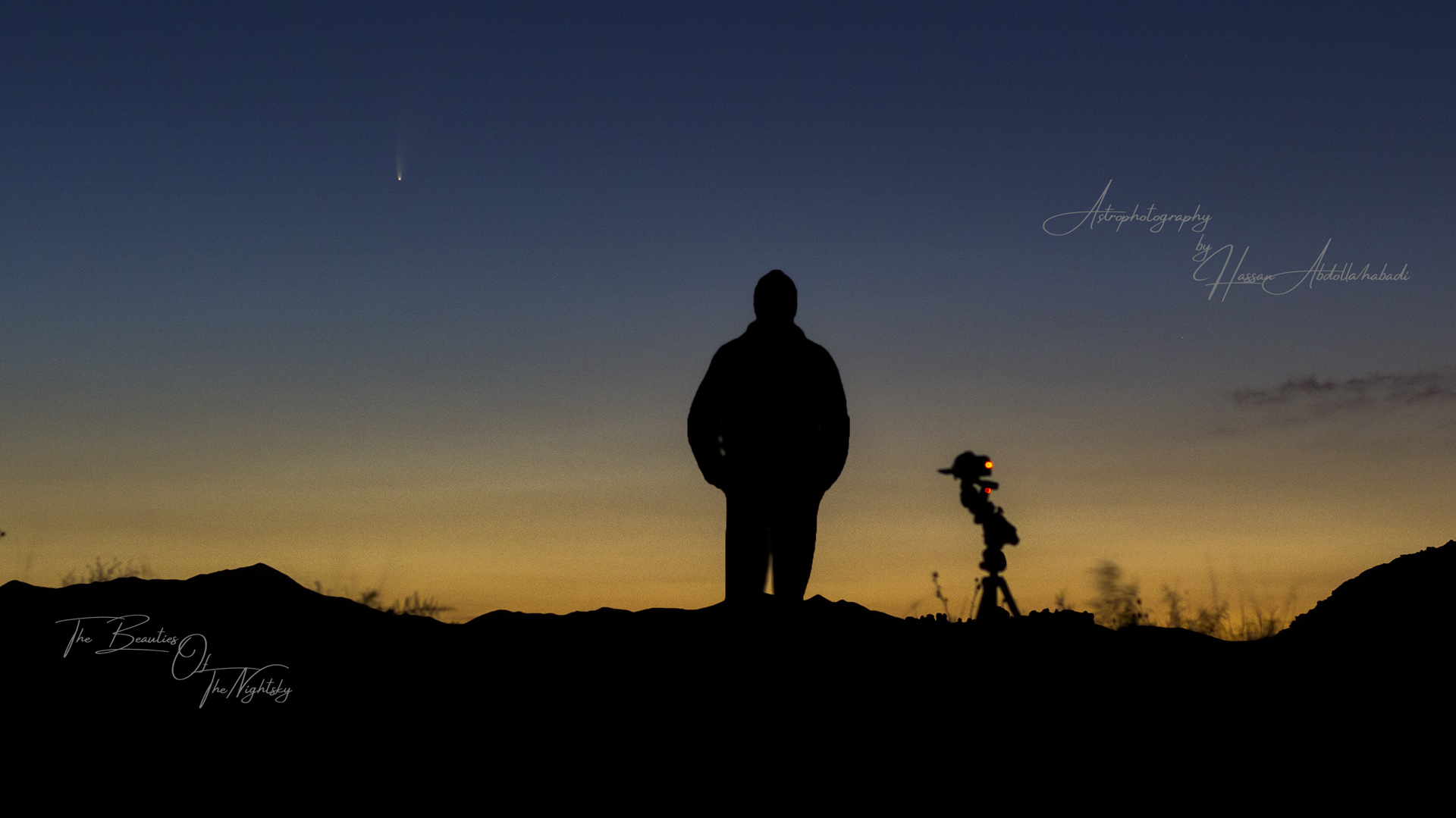
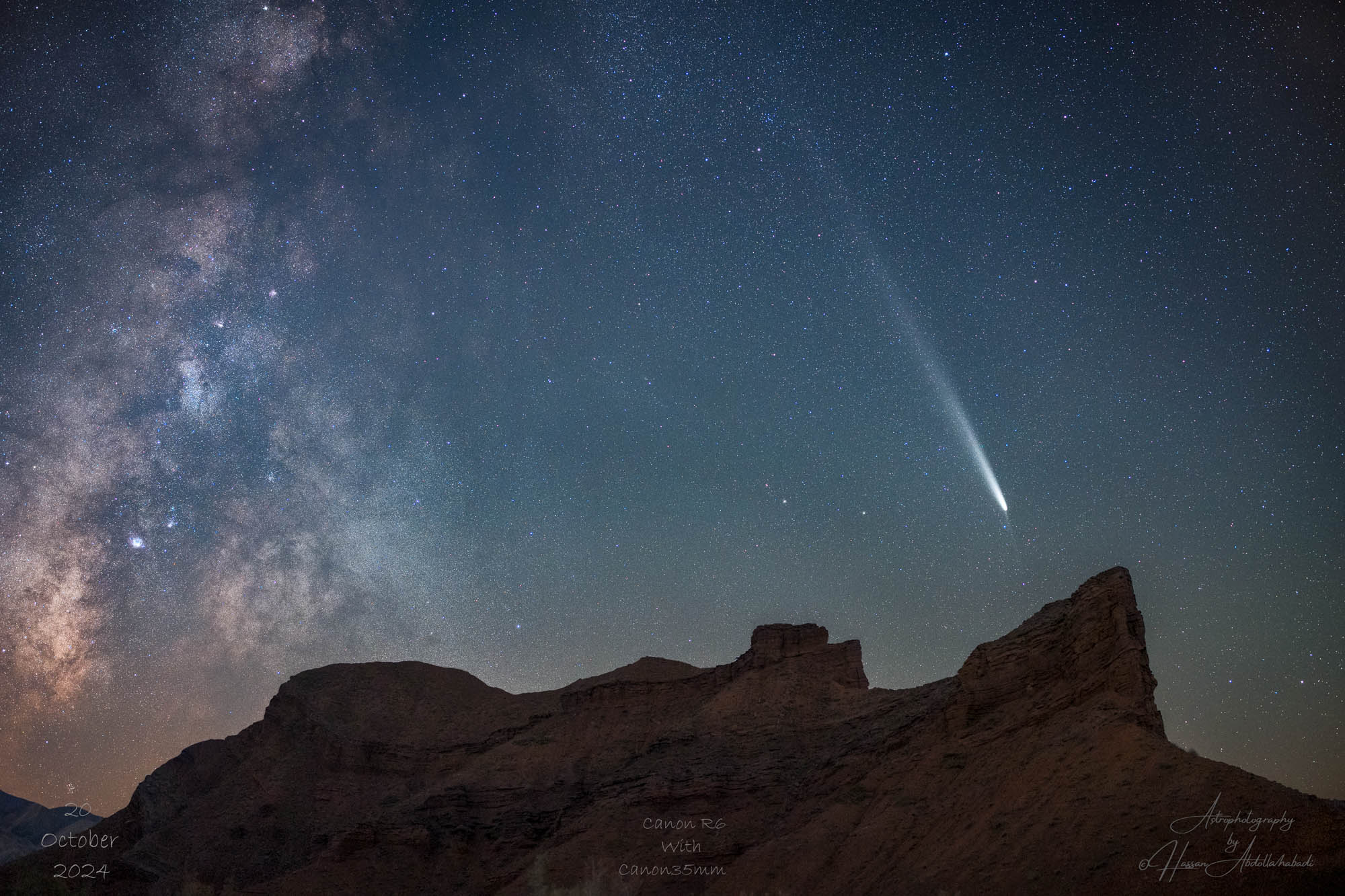
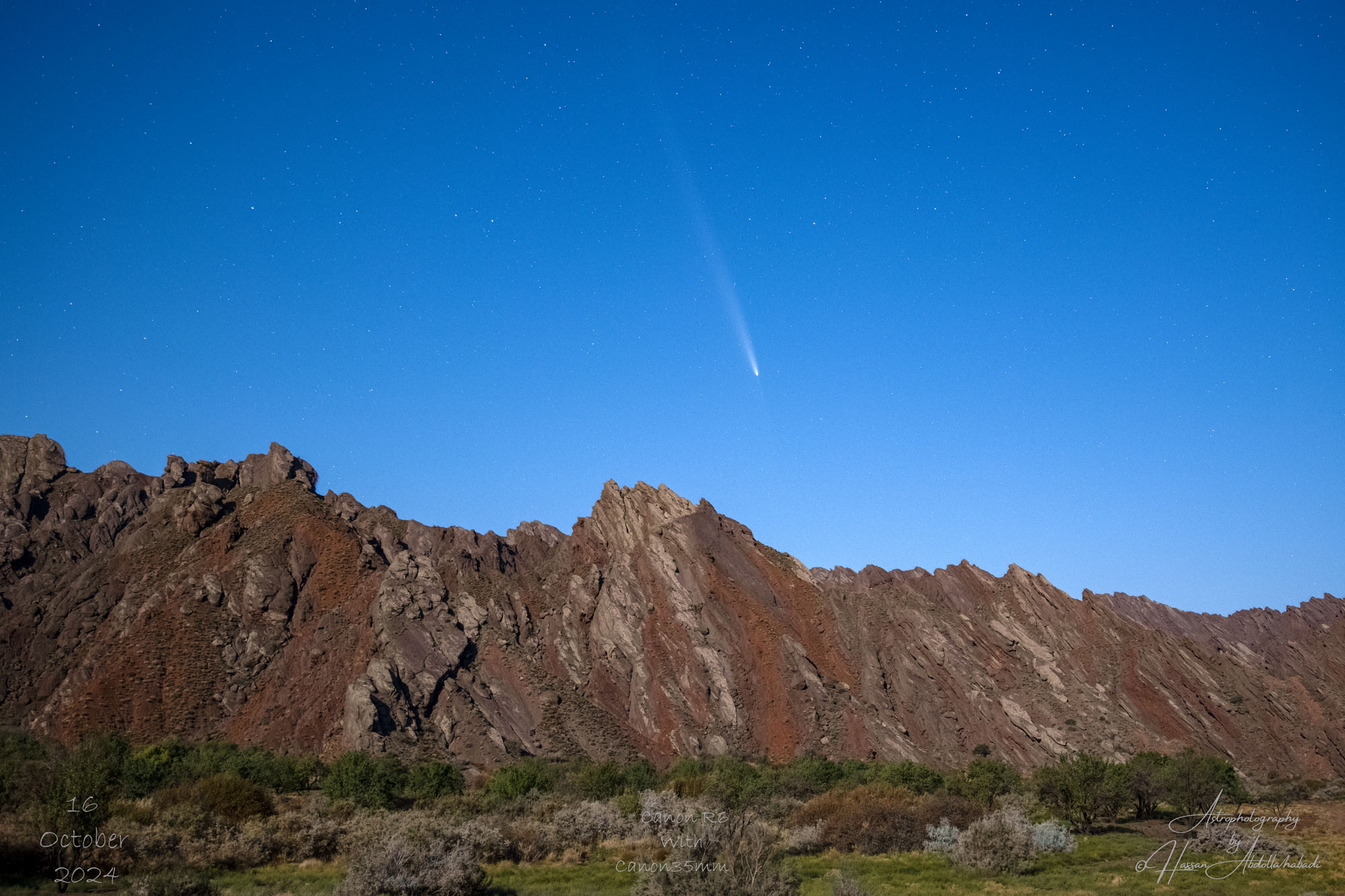
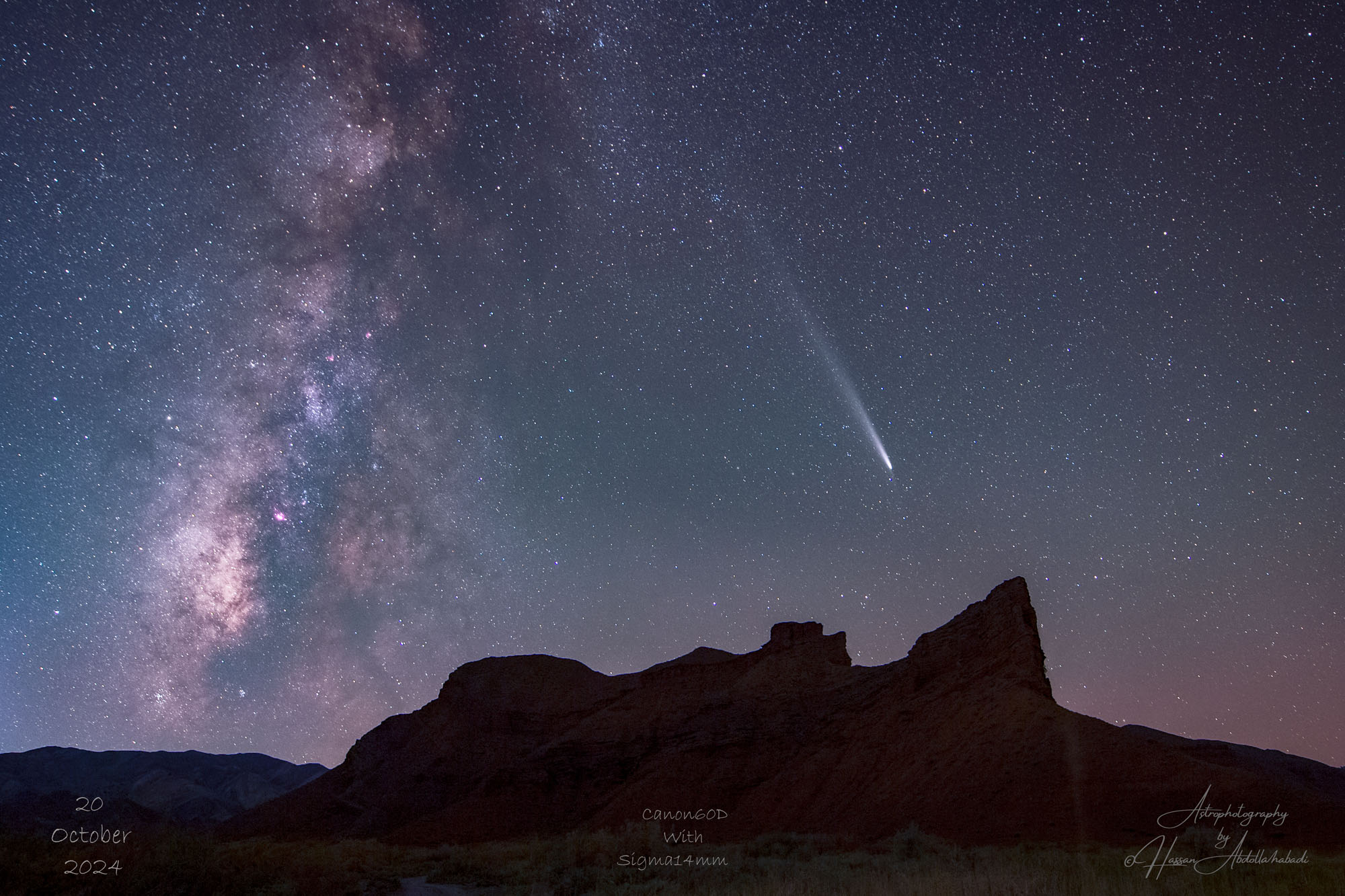
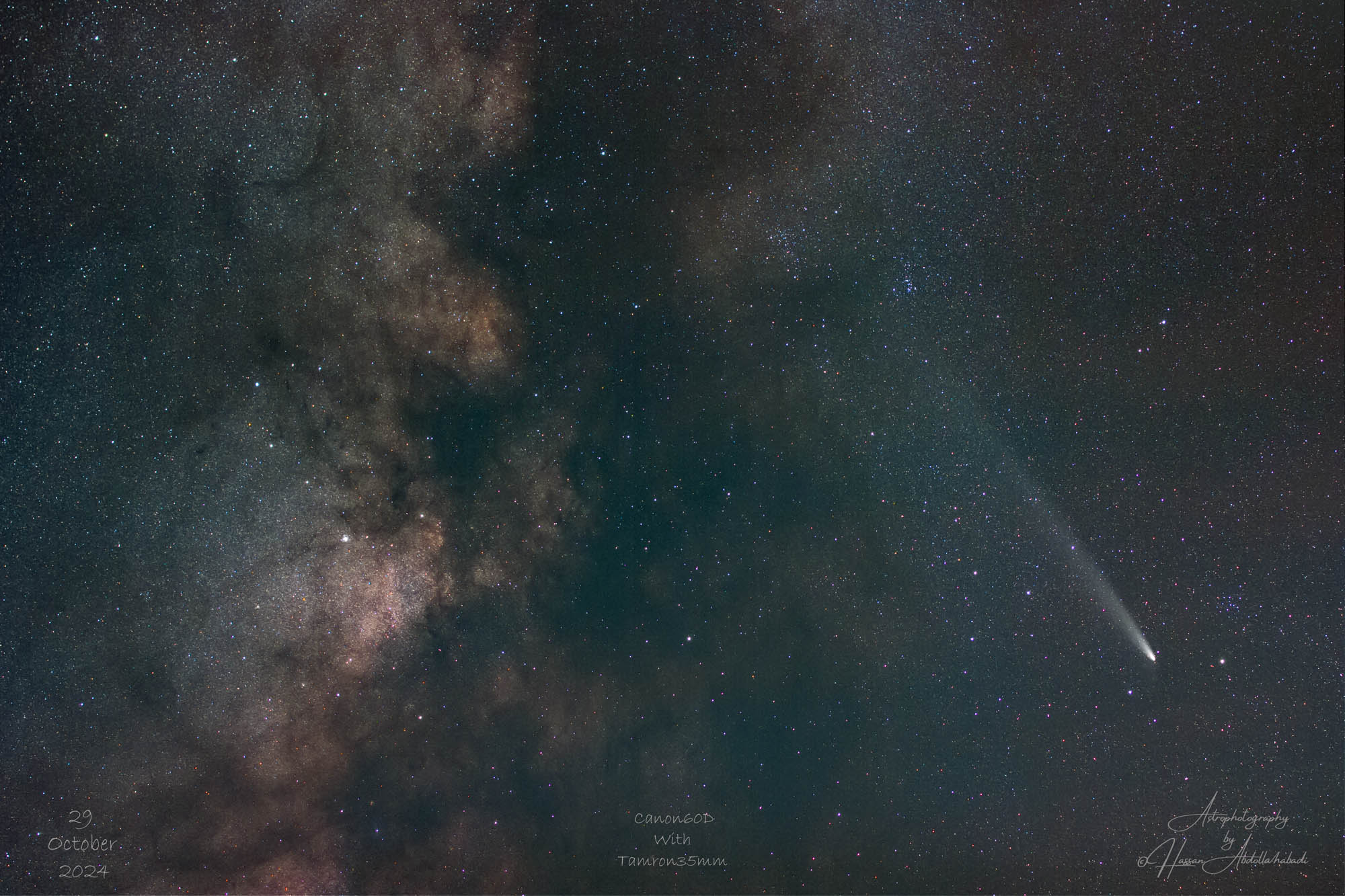
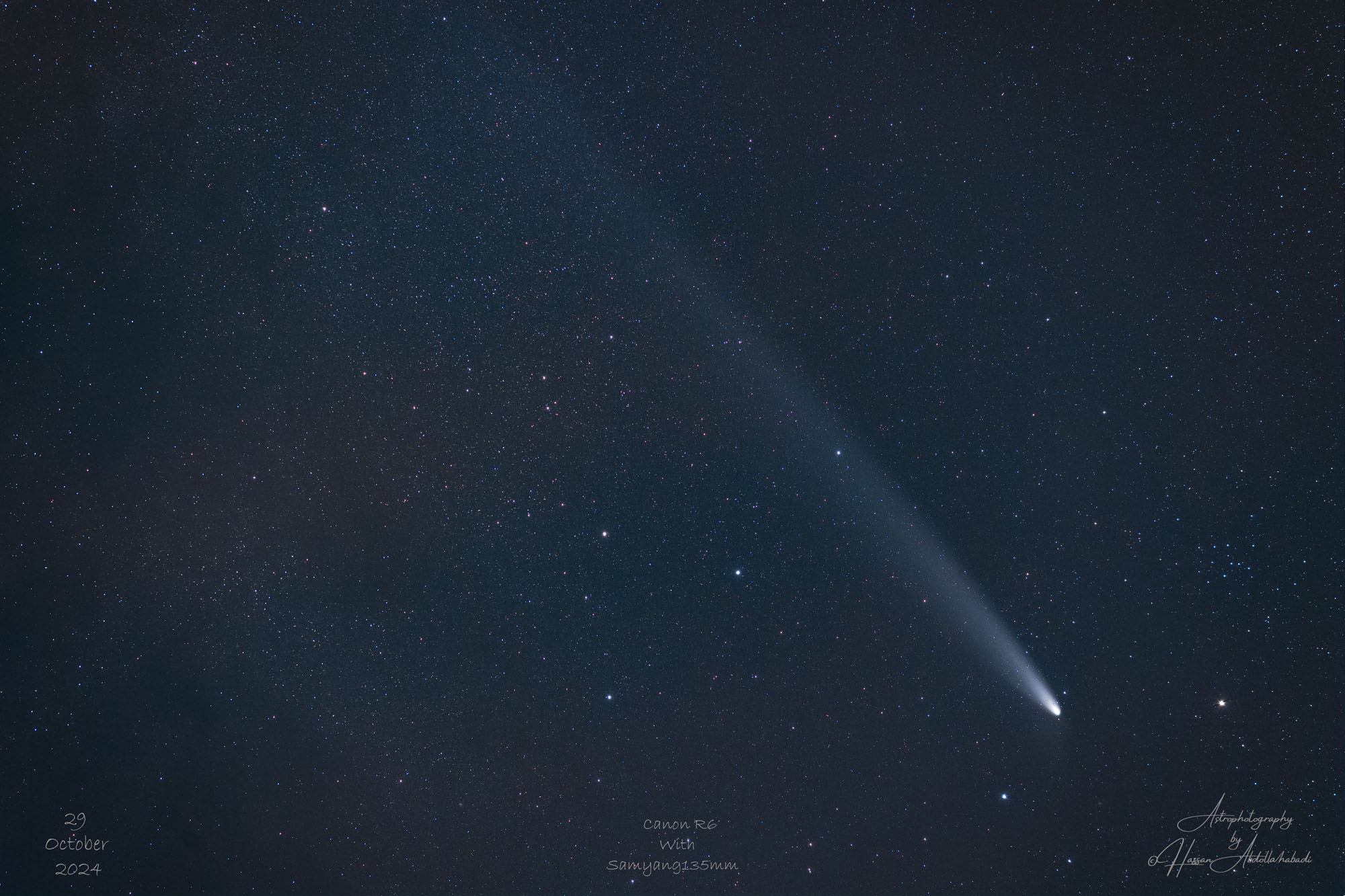
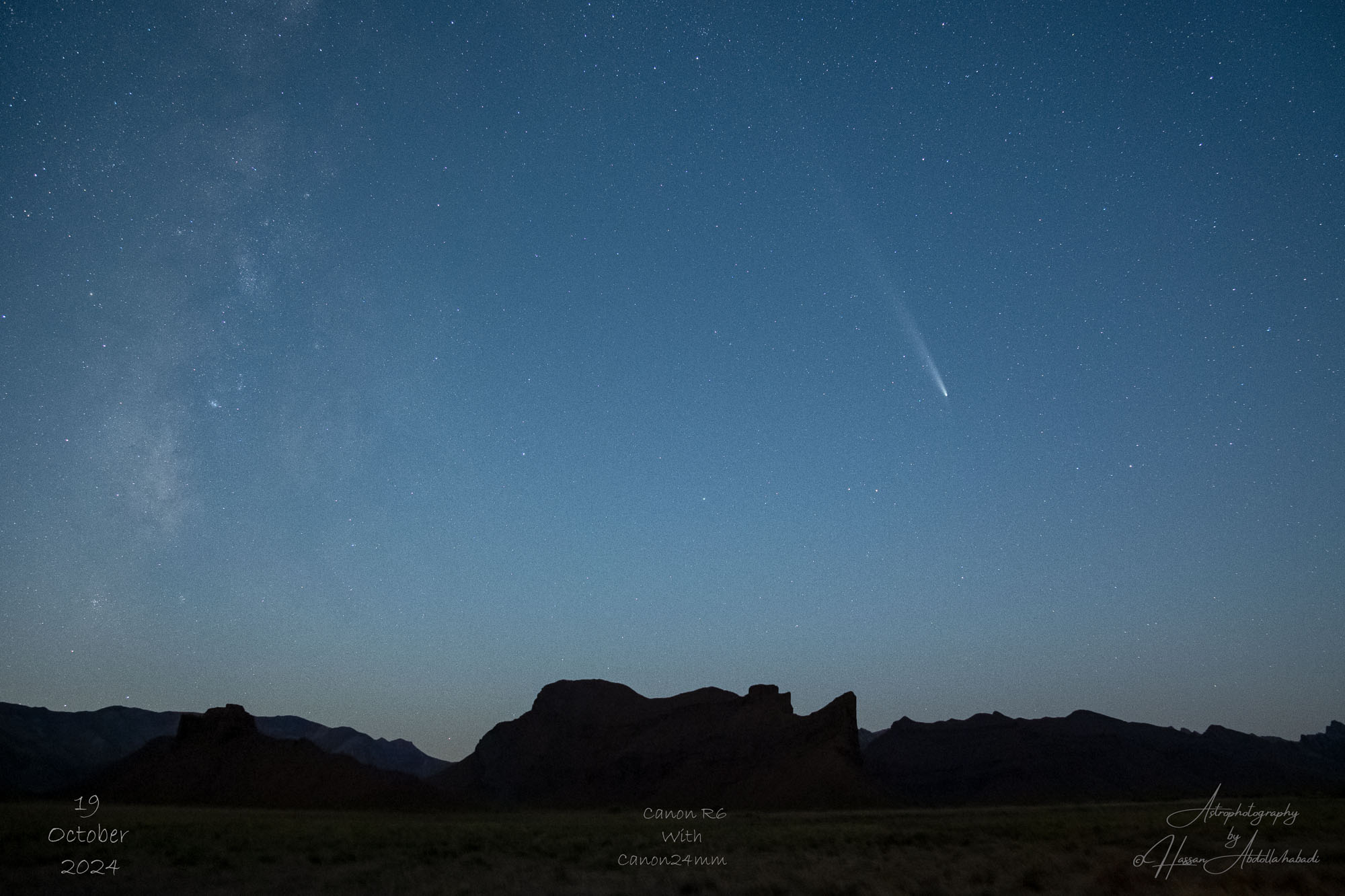


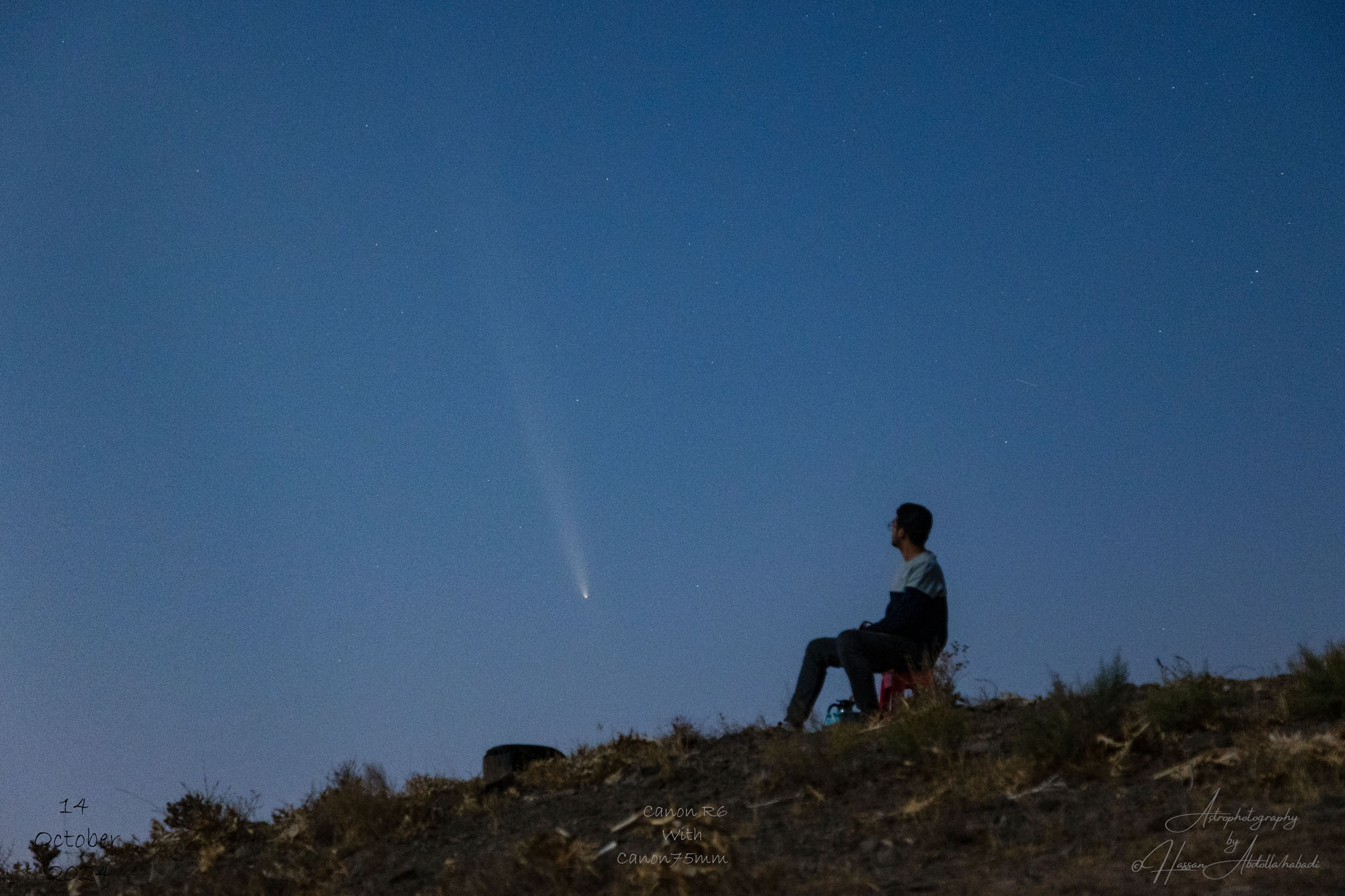
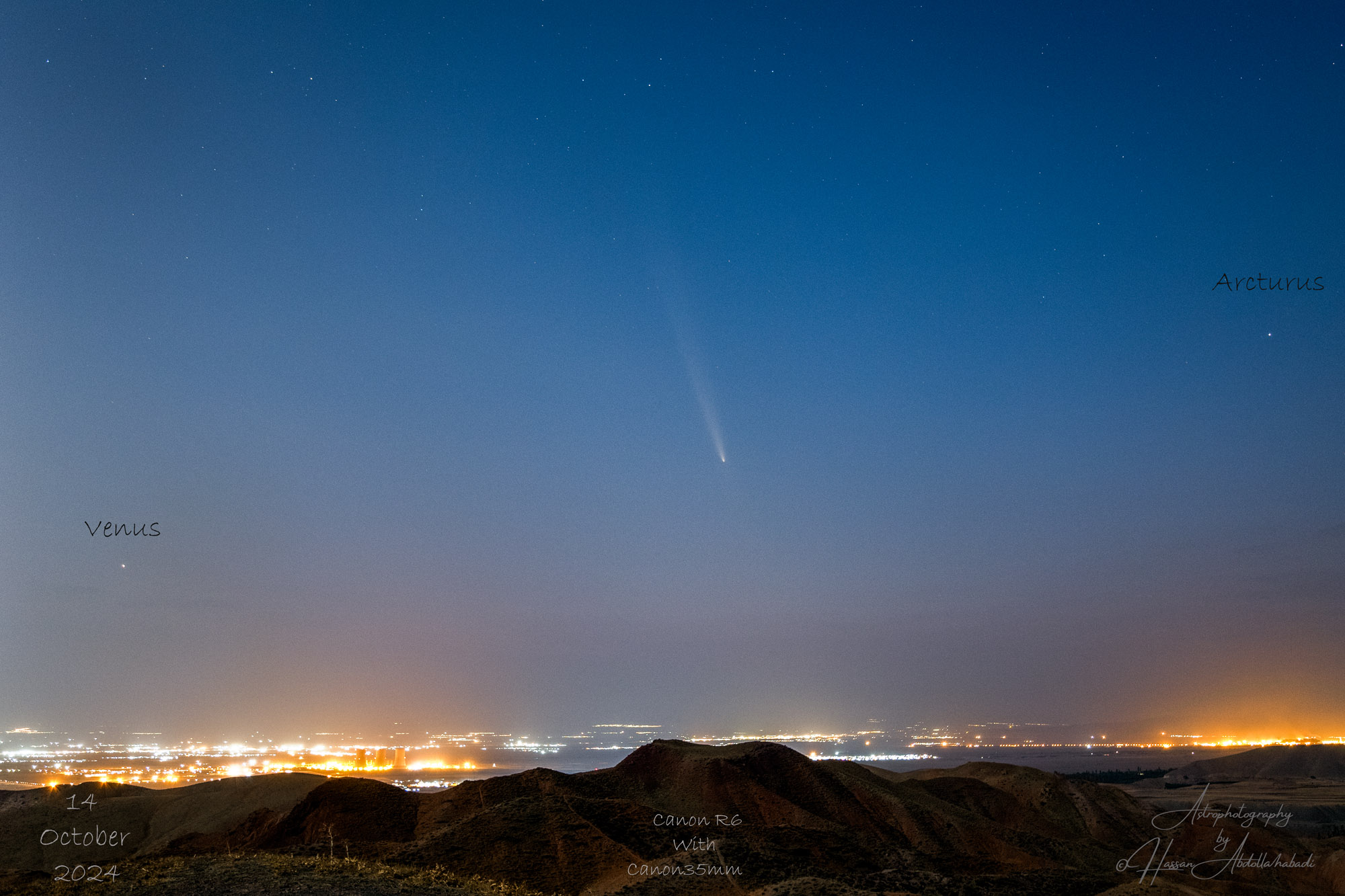
Wow Hassan you are very talented , incredible photos , god bless Iran and hoping for better days 🙏🙏🙏
Thank you
Iran will soon be free and return to its former glory